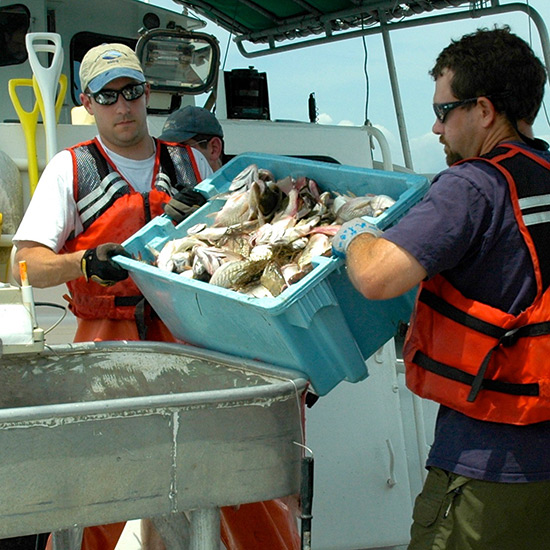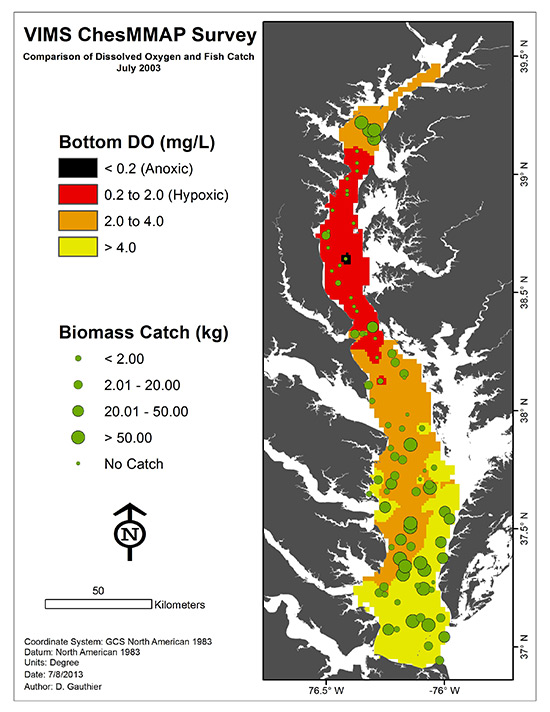Summertime dead zones displace Chesapeake Bay fish
Catch rates fall as low-oxygen conditions push bottom-feeding fish out of the Bay’s mainstem.
Dead zones are impacting the distribution and abundance of fish that live and feed near the bottom of the Chesapeake Bay, according to new research from the Virginia Institute of Marine Science (VIMS).
Dead zones, or areas of little to no dissolved oxygen, form when nutrient-fed algae blooms die and decompose, and are most pronounced in the deep waters of the Bay’s mainstem during warm summer months. During a decade-long study of the bottom-feeding fish that inhabit this portion of the Bay’s water column, scientists noticed drastic declines in species richness, diversity and catch rate as dead zones restricted habitat and displaced the fish toward more hospitable waters.

So-called “demersal” fish—which include Atlantic croaker, white perch, spot, striped bass and summer flounder—avoid dead zones because a lack of oxygen can place stress on their respiratory and metabolic systems. While the fish often return to their former habitat when oxygen levels improve, dead zones can also wreak havoc on their forage grounds, stressing or killing the bottom-dwelling invertebrates the fish need for food.
“Once oxygen levels go up, we do see the average catch rate go up,” said Andre Buchheister, Ph.D. student and author of the VIMS study. “That’s a good sign. It indicates that once those waters are re-oxygenated, it’s possible for fish to move back in. But the availability of food is compromised, and studies have shown that the productivity of benthic biomass—or the critters that live in and on the bottom of the Bay—is stressed.”

The impact that demersal fish displacement could have on Bay fisheries is unclear, Buchheister said. Commercial fishermen who work outside of the mainstem might not be affected. But recreational anglers searching for striped bass could struggle if their forced move out of cool, deep waters is shown to contribute to poor health among the population.
In June, a forecast from researchers at the University of Maryland Center for Environmental Science (UMCES) and the University of Michigan predicted a smaller than average dead zone for the coming summer, thanks to lower than average nutrient loads that entered the Bay last spring. But to return the Bay’s mainstem to its former health, “one or two good summers won’t make that much of a difference,” said Buchheister. Instead, benthic habitat must be rebuilt, as long-term improvements boost Bay health from the bottom up.
Images courtesy Virginia Institute of Marine Science (VIMS)

Comments
From a big fan of the Program, a suggestion that you talk to fishermen before publishing. Dead zones impact deep fish, but not so much fish feeding in the shallows or on the surface. Chesapeake anglers have learned to fish around areas where there is low DO. There are actually a whole lot of fish being caught in the red areas on that map.
Thank you!
Your comment has been received. Before it can be published, the comment will be reviewed by our team to ensure it adheres with our rules of engagement.
Back to recent stories